“My captain said, ‘You can’t take a knee.’ So I said, ‘Here’s my badge, and I won’t come back.’”
In a now-viral video, Keval Williams described quitting his job as a corrections officer at the Oklahoma City Sheriff’s Department while standing in a protest on June 1, holding up a sign that read “Black lives > white feelings.” For Williams, a Black man whose girlfriend is nine months pregnant, quitting his job was a tough but necessary decision amid a nationwide uprising against racist police violence.
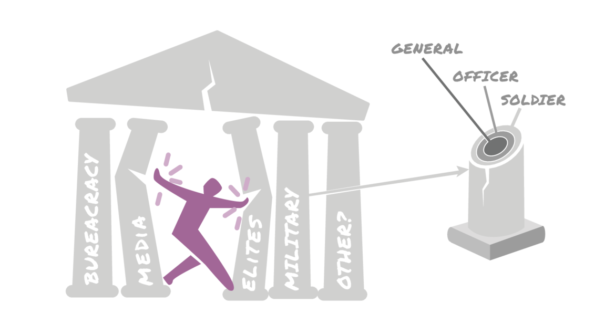
Williams’ actions are more than one brave individual standing up for his beliefs. They represent one of the key elements that has made the surge of anti-racist protests in the past three weeks so powerful. When members of the police and the military start disobeying orders, and bus drivers refuse to transport protesters to jail, and restaurant workers walk off the job instead of filling orders for police departments, a movement begins eroding the “pillars of support” — a term popularized by Serbian activists from the Otpor! movement to refer to the institutions that support the power structure in a given society.
Systems of power do not only exist through coercion, but they are upheld by the tacit acceptance and cooperation of millions of people, from the dockworkers who receive shipments of weapons to the school boards who sign contracts that bring police into schools. By attracting people from pillars like the business sector, education system and religious institutions to turn against the ruling regime and join with the movement, activists can tip the scales of power in their favor. It is important to pull these people into the movement rather than push them away to build a broader spectrum of allies for the cause.
Some pillars wield power through the threat of force — like the police and the military — and when they begin to doubt their allegiance to the regime, it weakens a ruler’s coercive power. Other pillars — like religious institutions and the media — exercise power to shape public opinion and social norms in the movement’s favor. When faith leaders, school teachers and celebrities take a public stand together, the movement gains a moral high ground and expands its base of supporters.
Previous Coverage
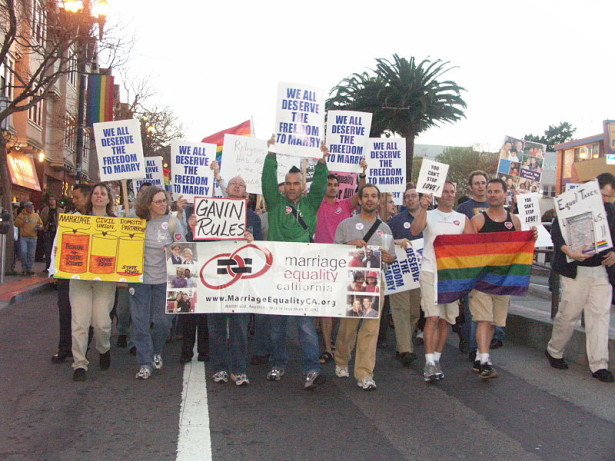 When the pillars fall — How social movements can win more victories like same-sex marriage
When the pillars fall — How social movements can win more victories like same-sex marriageCountless social movements in the past have borne witness to the importance of targeting pillars of support for a ruling regime. Gandhi’s strategy for Indian independence undermined British colonial power in India through large-scale boycotts, blockades and mass resignations by civil servants. The U.S. civil rights movement exposed the violence of Jim Crow to the American public through sustained media coverage of police attacks against peaceful protesters, shifting public opinion in favor of civil rights.
To understand the power of Black Lives Matter, we must examine how the movement is eroding the pillars of support that uphold the racist system of policing in the United States — and possibly the Trump administration as a whole.
Pillar 1: The police
The police make up one of the most important coercive pillars of any regime. They are the first line of defense to enforce unjust laws against civilians, and when police officers start doubting their loyalty to the force, a movement gains more power in the streets. Noncompliance or defections by police officers become more likely when police are ordered to use violence against their own communities, creating a moral crisis if they know their friends and family might be in the crowd.
The current wave of protests have mobilized a surge of public outrage against police violence, leading many officers to speak out about the abuses they witness on the force and compelling some to quit their jobs in protest. As with Keval Williams’ resignation to join protesters in Oklahoma City, more law enforcement officers around the country are sympathizing with protesters. According to one source, in the first week of June there were six police officers resigning each day from the New York Police Department. One video shows protesters in Oakland, California trying to appeal to police, chanting “Quit your job!” Encouraging cops to defy orders and join with the movement is a strategic way to draw them in, targeting them as potential allies rather than staunch opponents.
Embed from Getty ImagesOf course, most police have not quit their jobs — but the pillar is beginning to show cracks in other ways. Numerous videos from recent protests, like one on May 31 in Flint, Michigan, show police laying down riot gear and marching alongside protesters. While these actions have been criticized as publicity stunts — with police kneeling in symbolic support, only to tear gas protesters hours later — it may also indicate the internal conflict some police officers are wrestling with, especially Black officers who experienced police brutality before joining the force, or have faced discrimination while on the job. For some, like one former police officer who published an article called “Confessions of a Former Bastard Cop,” the protests may compel officers to speak out against the system and, ultimately, to withdraw their consent.
Pillar 2: The military
Like the police, the military imposes coercive power to uphold a repressive system, but their influence can also be eroded through defections and noncooperation. After the National Guard was deployed in Washington, D.C. to suppress peaceful protests, members of the military began questioning their orders — or refusing to comply outright. GI rights organizations have seen a spike in servicemembers requesting information about their legal right to participate in protests or to defy orders and become conscientious objectors.
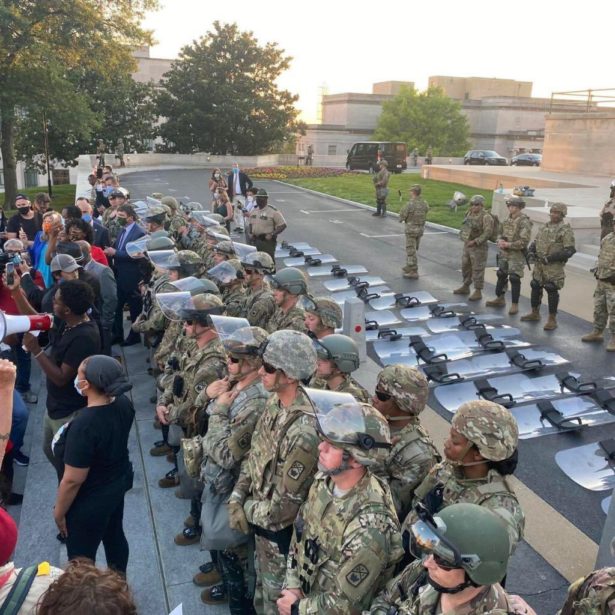
Meanwhile, veterans are taking to the streets to join the demonstrations in full uniform, and a group of National Guard soldiers in Tennessee laid down their shields upon protesters’ request. In Utah, one lone Marine with two Purple Hearts stood alone for hours at the State Capitol with the words “I can’t breathe” taped over his mouth. It was so hot that his shoes actually melted, creating an ethical spectacle and a powerful appeal to public sympathies.
Some veterans have been subject to brutal violence during protests, including one man who was shot in the head by a rubber bullet, leading to his hospitalization. Almost 900 veterans have signed an open letter telling troops to “Stand down for Black lives,” which appeals to broad popular support of veterans across the country.
Other high-ranking military and Pentagon officials, like former Defense Secretary James Mattis, have publicly criticized the use of military troops to violate constitutional rights of American protesters — showing that significant division may exist within the Trump administration itself. When this happens, it fuels popular support for a movement and undermines the legitimacy of a ruling regime.
Pillar 3: The education system
The education system plays a key role in upholding a ruling power structure because teachers educate the younger generation, and they are usually well-respected members of a community. Public school boards across the country have begun to cut ties and end contracts with police departments, from Minneapolis to Portland to Denver. Many colleges and universities across the country have followed suit, refusing to continue contracting local police for security at campus and sporting events.
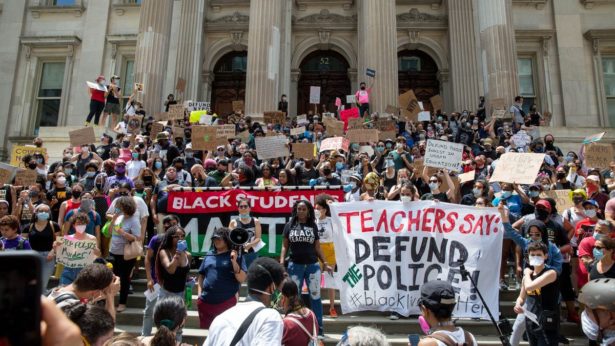
But the solidarity from educators goes beyond contracts, as many have taken to the streets themselves. Over a thousand people participated in a march led by educators and students in New York City on June 6, demanding support from the United Federation of Teachers to address systemic racism in schools, hire more Black and brown teachers and end the school-to-prison pipeline. The Chicago Teachers Union has been calling for the removal of police from schools at protests and rallies and, in Los Angeles, the union representing L.A. public school teachers voted to support drastic cuts to the budget of the L.A. School Police Department.
On June 14, a march in Chicago demonstrated the power of the education pillar to sway public opinion. Recent graduates and their teachers held a peaceful protest during the mayor’s virtual graduation ceremony, featuring guest speakers like Oprah Winfrey. They demanded the removal of police officers from schools and the reinvestment of funds from police departments into community services. At a time when public officials are celebrating graduates, teachers and students have an elevated platform to urge mayors and city councils to “fund Black futures” instead of treating students like criminals.
Pillar 4: Public officials and workers
Countless people make up the government bureaucracy, and their actions determine whether basic public services continue to function. If they withdraw their participation and consent, it becomes nearly impossible for a leader to impose control. One of the most prominent examples of resistance among public servants in the current protests is the refusal by transportation workers in cities like New York and Boston to transport police officers to protests, as well as the protesters they arrest. The Amalgamated Transit Union released a statement declaring that bus drivers have the right to refuse their services to aid police in protests, deeming this a “misuse of public transport.”
In Minneapolis, other workers have resisted in similar ways, with over 400 nurses, postal workers and hospitality staff signing a pledge not to help police suppress the protests. First responders have also joined the fight, with an ambulance driver in New York cheering on protesters, and a coalition of Black fire fighters joining demonstrations in uniform. Nurses and doctors have also gained visibility in the protests leading “White Coats, Black Lives” marches around the country.
Embed from Getty ImagesOther government officials have taken a stand with the resistance. Hundreds of current and former staff from the mayor’s office in New York City signed an open letter criticizing Bill de Blasio’s response to George Floyd’s death and organized a march to his home on June 8. City councils have voted to dismantle or drastically cut funding to police departments in cities like Minneapolis and Los Angeles. Meanwhile, the New York City Council announced its intention to cut $1 billion from the New York Police Department’s budget.
Another drastic shift has occurred in public officials’ stances on removing Confederate statues from parks and public buildings. County commissioners across the country — including in Alabama, Texas and Kentucky — have voted to remove long-standing statues of Confederate leaders. This phenomenon has resonated with solidarity protests around the world, like the crowds in Bristol, U.K. who toppled the statue of a slave-trader and threw it into the river. Government workers — such as city councillors, county commissioners and bus drivers — make up a crucial pillar of support for any ruling regime. And, like so many Confederate statues, this pillar has begun to crumble.
Pillar 5: Religious institutions
Similar to teachers, religious leaders play a key role in shoring up legitimacy of those in power. They represent a moral high ground, and usually command more respect from the general public. If police use violence against religious leaders in a demonstration, it tends to backfire and stoke public outrage.
This is exactly what happened on June 1, when U.S. Park Police and National Guard troops used tear gas and rubber bullets to clear peaceful protesters from Lafayette Square in Washington, D.C., enabling Trump to pose for a photo with the Bible in front of St. John’s Episcopal Church. They inadvertently gassed some of the priests at the church, leading to a massive outcry by faith leaders around the world. The Pope called on the U.S. Conference of Catholic Bishops to offer encouragement for protesters, which they did, and leaders from many other faith communities, including the Southern Baptist Convention, the Church of Jesus Christ of Latter-day Saints, and Orthodox and Reform Judaism, have expressed support for the movement.
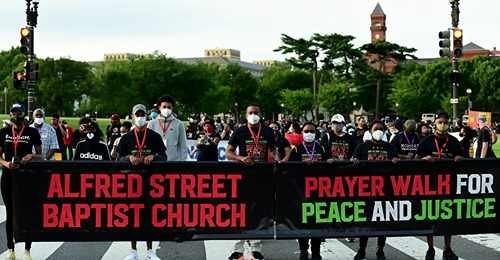
These statements of outrage have transformed into actions across the country as faith leaders take to the streets and march against racial injustice and police brutality. On June 7, Republican Sen. Mitt Romney joined a march of nearly 1,000 Christians, led by local pastors, who walked from Ward 7 in Washington, D.C. to the White House. On June 14, Black clergy organized a march to the Black Lives Matter Plaza in front of the White House to pray with thousands of faith leaders and congregants. From a car protest in Missouri to a fast and occupation in Connecticut to a march in Tennessee, faith leaders across the country are using the moral weight of their positions in local communities to demand concrete changes in racist policing practices.
Pillar 6: Business institutions and labor unions
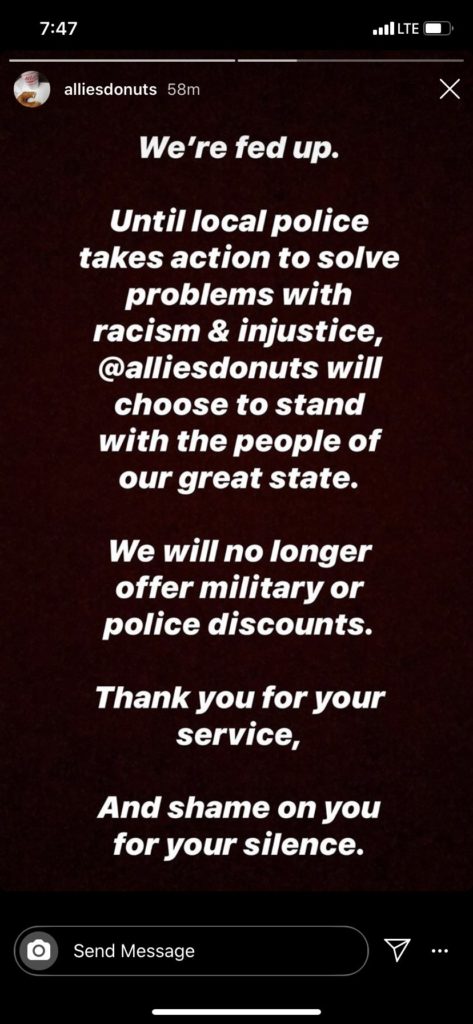
Businesses and labor unions also play a key role in upholding power structures, and many actors in the business sector have begun to stand with protesters — or faced public backlash and boycotts. Some workers have taken direct action, like the local taco shop in Ohio where employees walked off the job instead of filling a large order for the police station and a cafe where workers walked out to protest a discount given to police officers. One donut shop in Rhode Island cancelled its police discount altogether.
These individual cases can grow into a larger trend as activists continue building momentum. Protesters have called for a boycott of Amazon, which contracts with over 600 police departments to sell surveillance equipment, leading the company to declare a one-year moratorium on police use of facial recognition technology. Activists have also mounted a #GrabYourWallet campaign to boycott a number of brands that donate to the Trump 2020 campaign, including CVS, Planet Fitness and Charles Schwab. In Seattle, Black Lives Matter organized a statewide strike on June 12 to advance a list of demands, including cutting $100 million from the police budget in Seattle.
Some companies are taking action to cut off equipment for police, like Fuji Bikes, which announced that it would stop selling bikes to North American police forces after witnessing their use of “violent tactics.” Other measures are cutting police equipment on a much larger scale. In the United Kingdom, 166 Members of Parliament have called for the U.K. to end exports of rubber bullets and tear gas to the United States.
Many unions have also responded, with calls for the AFL-CIO to expel the International Union of Police Associations from its ranks. MLK Labor in Seattle, the body representing over 150 unions and 100,000 workers, told the Police Officer’s Guild to address systemic racism or the council would disaffiliate with the guild.
Other unions have taken action in solidarity. On June 9, members of the International Longshore and Warehouse Union, the International Longshoremen’s Association and the International Brotherhood of Teamsters participated in a work stoppage for eight minutes and 46 seconds — the length of time a Minneapolis police officer kneeled on George Floyd’s neck, killing him and sparking a nationwide movement.
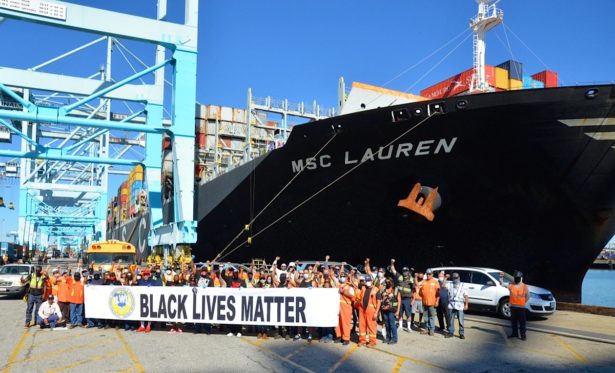
Individually, each of these pillars can disrupt the normal order of operations in society and drive tangible changes in specific sectors. When taken together, however, the withdrawal of consent among these crucial pillars at the same time threaten to dismantle the widespread public acceptance and cooperation that have long upheld the structures of racist policing in the United States.
To be effective, activists and community leaders in each city or state can analyze the pillars of support that uphold institutionalized racism and police power. Some pillars play a more crucial role than others, and moving these pillars will require activists to develop careful strategy, identifying key decision makers who can be moved to advance the movement’s goals. Organizers can also examine each pillar to find weak spots, places where there might be more room to effect change. As the movement develops new tactics to undercut these pillars, activists are steadily eroding support for the police and building a new vision to invest public funds in communities instead of police.

Amidst all the tragedy of lives so callously taken – this current BLM movement and all its associated manifestations is thrilling – because it is uniting the people across the spectrum of society. Not only in the US but here in Australia where I am writing from – as we examine the similar ugliness by power structures against those whose land here was invaded in 1788 – and who have survived the massacres and other official discrimination practised against them right up until now! Thank-you for this report.
Sarah and fellow readers, you’ve been duped. You’re spreading misinformation. I do believe encouraging police to quit is the best move on the chess board. But what you are describing are publicity stunts, not real change.
Busting copaganda: the truth behind police “taking a knee” & “joining protests”
https://m.youtube.com/watch?v=Ea1E9-eoNkc